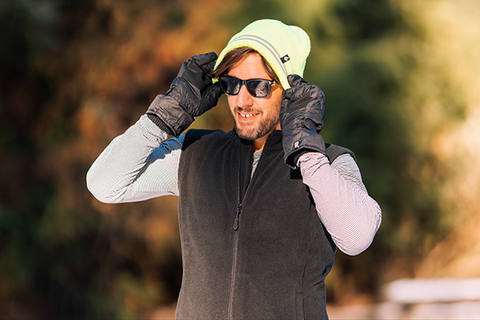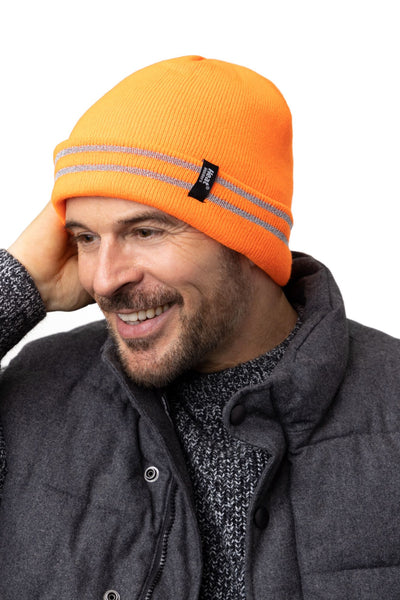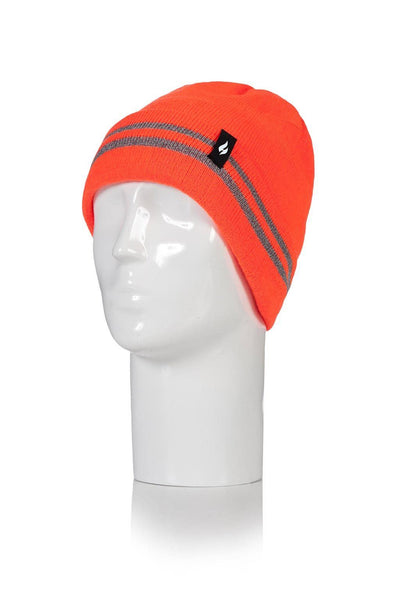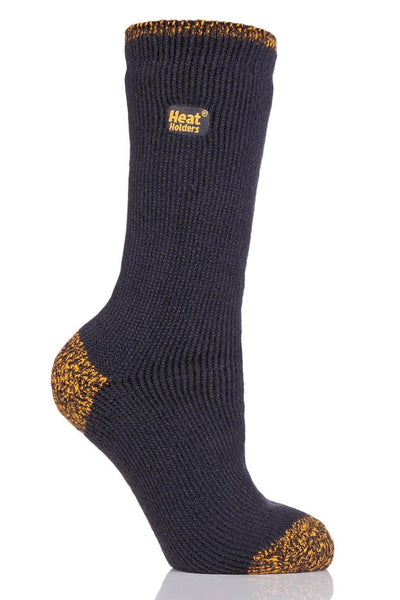Winter can be harsh, especially for those who work outside. It's crucial to equip yourself with the right cold weather gear to protect against the bitter cold, wind, and snow. In this article, we'll explore the importance of proper cold-weather gear, the essential features to look for, the top gear categories, and tips for maintaining and investing in the right gear.
Understanding the Importance of Proper Cold Weather Gear
When it comes to working in low temperatures, proper cold-weather gear is not just a convenience, it's a necessity. Inadequate protection can lead to frostbite, hypothermia, and other serious health risks. Let's delve deeper into the risks of inadequate cold protection and the benefits of high-quality cold-weather gear.
The Risks of Inadequate Cold Protection
Working without proper cold-weather gear exposes you to various risks. Frostbite is a real threat to your extremities, such as your fingers, toes, ears, and nose. Prolonged exposure to extreme cold can lead to tissue damage and even amputation. Hypothermia, a dangerous drop in body temperature, can also occur if your body fails to generate enough heat to maintain its core temperature. Furthermore, freezing temperatures can impair your dexterity and increase the likelihood of accidents.
Imagine a scenario where a construction worker is exposed to icy winds and freezing temperatures on a high-rise building. Without the right gear, their fingers and toes become numb, making it difficult to grip tools or maintain balance. The lack of insulation allows the cold to penetrate their body, causing their core temperature to drop rapidly. As the body struggles to generate enough heat, its cognitive function becomes impaired, making it challenging to make quick decisions and respond to potential hazards.
Inadequate cold protection not only affects physical health but also mental well-being. The discomfort and pain caused by the cold can lead to decreased morale and motivation, affecting productivity and overall job satisfaction. It is crucial to prioritize the safety and well-being of workers by providing them with the necessary cold-weather gear.
The Benefits of High-Quality Cold Weather Gear
Investing in high-quality cold-weather gear offers numerous benefits. Firstly, it provides effective insulation to retain your body's heat, keeping you warm and comfortable throughout your workday. High-quality materials such as down, synthetic fibers, and advanced thermal technologies trap and retain heat, creating a barrier between your body and the cold environment.
Additionally, good cold-weather gear is designed to wick away moisture, preventing sweat from accumulating on your skin. Moisture can quickly cool down the body, leading to discomfort and increasing the risk of hypothermia. With proper moisture management, your body remains dry, reducing the chances of heat loss and maintaining a comfortable working environment.
Another advantage of high-quality cold weather gear is its ability to protect against wind and snow. Strong gusts of wind can easily penetrate through low-quality materials, chilling your body and negating the insulation. However, well-designed gear with windproof and waterproof features acts as a shield, preventing the cold air and moisture from reaching your skin.
Furthermore, good quality gear is designed for optimal mobility, ensuring that you can perform your tasks efficiently without feeling restricted or burdened by bulky clothing. Innovative designs incorporate stretchable fabrics and strategic placement of insulation to allow for freedom of movement. This flexibility is particularly important in physically demanding jobs where agility and quick reflexes are necessary.
Overall, investing in high-quality cold-weather gear is an investment in your safety, comfort, and productivity. By providing adequate protection against the risks of frostbite, hypothermia, and impaired dexterity, you can work confidently and efficiently even in the harshest cold weather conditions.

Essential Features of Good Cold Weather Gear
Now that we understand the importance of proper cold weather gear, let's explore the key features that make cold weather gear effective.
When it comes to cold weather gear, several material considerations can greatly impact its effectiveness. Opting for materials that offer excellent insulation and moisture-wicking properties is crucial. High-quality synthetic fabrics, such as polyester or nylon blends, are a popular choice due to their lightweight, breathable, and quick-drying nature. These fabrics not only provide insulation but also allow for proper ventilation, preventing sweat from accumulating and making you feel uncomfortable.
In addition to synthetic fabrics, insulated layers made of down or synthetic fillings are highly recommended. These materials provide exceptional warmth without adding unnecessary bulk, allowing you to move freely while staying cozy. Down insulation, in particular, is known for its excellent heat retention properties, making it a popular choice for cold weather gear.
Aside from the material, paying attention to the design elements of cold weather gear is equally important. Features like adjustable hoods, storm flaps, and cuffs play a significant role in sealing in warmth and protecting against harsh wind and snow. An adjustable hood, for instance, allows you to tighten it around your face, preventing cold air from entering and keeping your head and neck warm. Storm flaps are additional protective layers that cover zippers or buttons, preventing wind and snow from seeping through the closures. Cuffs that can be tightened or secured with Velcro straps help keep cold air out and warmth in.
When it comes to durability and functionality, reinforced knees and elbows are essential design elements to consider. These reinforced areas provide extra protection and prevent wear and tear, ensuring that your gear lasts longer. Ergonomic designs that allow for ease of movement are also crucial, especially if you engage in activities that require flexibility and agility, such as hiking or skiing.
Lastly, the convenience of storage cannot be overlooked. Garments with multiple pockets offer a practical solution for carrying tools, personal items, or even extra layers. Whether it's a small zippered pocket for your keys or a larger one for a map or gloves, having ample storage options can make a significant difference in your outdoor adventures.
Top Cold Weather Gear Categories
Now that we know what to look for in cold weather gear, let's explore some of the top categories that are essential for working in freezing temperatures.
Insulated Workwear for Cold Conditions
When it comes to working in freezing temperatures, insulated workwear is a must-have. These garments, such as jackets, bib overalls, and coveralls, provide all-around protection against the cold. Look for garments with high insulation ratings, durable construction, and features like reinforced knees and elbows for added functionality.
Insulated jackets are designed to keep your body warm by trapping heat inside. They often come with adjustable hoods and cuffs to provide a snug fit and prevent cold air from seeping in. Bib overalls and coveralls, on the other hand, offer full-body protection. They are typically made from heavy-duty materials that can withstand harsh conditions.
When choosing insulated workwear, consider the type of insulation used. Synthetic insulation, such as polyester or nylon, is lightweight and quick-drying, making it ideal for active work. On the other hand, down insulation provides excellent warmth but may lose its insulating properties when wet. It's important to find the right balance between warmth and functionality for your specific needs.
Protective Footwear for Freezing Temperatures
While it's easy to focus on keeping your body warm, don't forget about your feet. Investing in insulated and waterproof footwear is essential for working in freezing temperatures. These boots provide insulation, traction, and protection against cold, wet conditions.
When choosing protective footwear, look for boots with thick insulation to keep your feet warm. Insulated boots are often lined with materials like Thinsulate or fleece, which provide excellent warmth without adding bulk. Additionally, opt for boots with slip-resistant soles to prevent accidents on icy surfaces.
Waterproofing is another crucial feature to consider. Working in cold, wet conditions can lead to discomfort and even frostbite if your feet get wet. Look for boots with waterproof membranes or treated leather uppers to keep your feet dry and protected.
Lastly, consider boots with protective toe caps. These caps provide an extra layer of protection against impact and compression hazards. Whether you're working in construction, landscaping, or any other field, having footwear that meets safety standards is essential.
Gloves, Hand Gear, and Accessories for Cold Weather Work
When dressing for cold weather work, it's important not to neglect your hands. Exposing your hands to freezing temperatures can not only be uncomfortable but also pose a safety risk. Look for gloves and hand gear that offer both insulation and dexterity, allowing you to handle tools and perform intricate tasks comfortably.
Insulated gloves are designed to keep your hands warm while still allowing you to maintain a good grip and dexterity. Look for gloves with a combination of insulation materials, such as Thinsulate or fleece, and a durable outer layer to protect against abrasions and tears.
Waterproof and windproof materials are also important features to consider. Working in cold and wet conditions can quickly lead to discomfort and even frostbite if your hands get wet. Look for gloves with waterproof and windproof membranes or coatings to keep your hands dry and protected.
In addition to gloves, consider other accessories, like neckwarmers or headbands. These accessories can provide an extra layer of warmth during extremely cold conditions. Some hand warmers are disposable and can be easily tucked into your gloves, while heated glove liners are rechargeable and offer adjustable heat settings.
Remember, finding the right cold weather gear for your specific needs is crucial. Consider the temperature range you'll be working in, the level of physical activity, and any specific safety requirements. By investing in high-quality gear that offers both warmth and functionality, you can work comfortably and safely even in the coldest of temperatures.
Maintenance and Care for Your Cold Weather Gear

Proper maintenance and care are essential to prolong the lifespan and effectiveness of your cold weather gear. Let's explore some tips for cleaning, storing, and knowing when to replace your gear.
Cleaning and Storing Your Gear
Follow the manufacturer's instructions for cleaning your gear. Regularly wash and dry your gear to remove dirt, sweat, and odors, which can compromise performance. Store your gear in a dry, well-ventilated area away from direct sunlight, heat sources, or extreme cold to maintain its integrity.
When to Replace Your Cold Weather Gear
Inspect your gear regularly for signs of wear and tear. If you notice any significant damage, such as rips, tears, or loss of insulation, it may be time for a replacement. Additionally, if your gear no longer provides adequate warmth or protection, it's essential to invest in new gear to ensure your safety and well-being.
Investing in the Right Cold Weather Gear
When it comes to investing in cold weather gear, it's important to balance cost and quality. While it may be tempting to opt for inexpensive options, remember that quality gear will offer better insulation, durability, and overall value in the long run.
Balancing Cost and Quality in Cold Weather Gear
Consider your specific needs, the climate you'll be working in, and the expected longevity of the gear. Research reputable brands and read reviews to find the best balance of cost and quality. Remember, investing in high-quality gear is an investment in your safety and comfort.
Where to Purchase Reliable Cold Weather Gear
When it comes to purchasing cold weather gear, consider reliable retailers who specialize in workwear and safety equipment. They often offer a wide selection of trusted brands and can provide valuable guidance and recommendations based on your specific needs.
Conclusion
Equipping yourself with the best cold weather gear is essential for working outside during the winter months. Proper gear protects against the risks of frostbite and hypothermia while providing optimal warmth, comfort, and mobility. Remember to choose gear with the right materials and design elements, and maintain it properly to ensure its longevity. Investing in high-quality gear is an investment in your safety and well-being. Stay warm, stay protected, and be ready for the cold!















